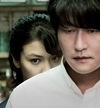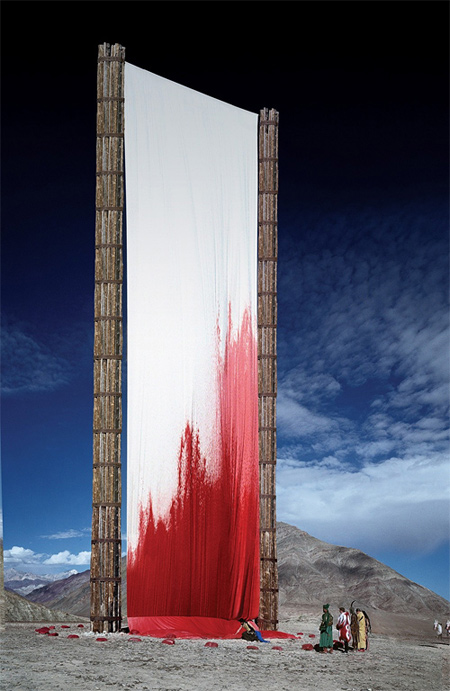I’m never really sure what to say here about widely-seen and discussed movies. You’re a mouse-click away from more professionally-written articles than you could ever want to read about both these films. And while they’re both terrific films, I don’t really need to tell you to see them. I’d rather tell you to go see The Hurt Locker or (should your tastes go that way) Blood Freak. But here are some thoughts.
- The fact that both films are turning out to be very successful financially is, I think, a satisfying rejoinder to the arrogant, elitist view that mainstream audiences are too unsophisticated to want anything challenging in their summer movies. You have here an apartheid-themed movie set entirely in South Africa and a long, talky movie where most of the dialogue is in German and French. Neither will do Transformers 2 box office, but these movies are both going to make a lot of people a lot of money, and entertain people, to boot. And unlike Transformers, people are going to be talking about these movies ten years from now. The lesson is that with the right marketing, you can get away with all that as long as you aren’t boring.
- Inglourious Basterds is the work of a master at the peak of his abilities, and District 9, the work of an emerging talent, but both have a scrappy sureness and a mix of the cerebral and the visceral that I really enjoy. Though maybe it’s more accurate to say neither Tarantino or Blomkamp have any interest in distinguishing between the head and the gut in their filmmaking.
- Nazis and South African racists both make excellent villains, and both films give us a kind of alternate, fantasy take on events where historical evil can actually be appropriately punished. I’m not at all a bloodthirsty person, but I’ve been reading a lot of World War II history the past few years, and I could watch the climactic theatre scene of Basterds ten times in a row. The more I read about history the less sympathy I feel for the people who willingly stepped onto the wrong side of it.
- That said, Landa the Jew Hunter may be the single greatest character to ever appear in a Tarantino movie.
- SPOILERS. I had been looking forward to both movies for a while, and trying not to learn too many details going in. This worked better for Basterds than District 9. I was actually a bit disappointed that the latter turned into such a typical action movie — maybe if I’d known, I’d have kept my expectations more modest. But Basterds continually went in new and unexpected directions. Tarantino has gone from a talented stylist and dialogue writer to the master of letting scenes unfold at their own pace, and without his crutch of pop-culture references (or the English language), you can see what a great storyteller he has become. I’ve not decided yet where Basterds fits into the Tarantino pantheon, but I look forward to watching it several more times to try to decide. District 9 mostly makes me eager to see what Neill Blomkamp does next.

 Looking for something to wash out the bad taste of the Avatar trailer (it made
Looking for something to wash out the bad taste of the Avatar trailer (it made 
 On the surface, Thirst, the latest film from Park Chan-Wook (who did the brilliant Oldboy, the pretty great Sympathy for Lady Vengeance and the okay Sympathy for Mr. Vengeance), is the story of a Korean priest who becomes a vampire. But what it’s really about is Park’s ongoing analysis of the corrosive effect sin has on the soul. Initially a bottomless well of compassion and morality in a world that needs it, the infected priest is soon drinking the blood of a bitter fellow priest and having hot vampire sex with an unhappily married woman. This leads to a cycle of increasingly immoral behaviour, with each step coming faster, steeper and easier.
On the surface, Thirst, the latest film from Park Chan-Wook (who did the brilliant Oldboy, the pretty great Sympathy for Lady Vengeance and the okay Sympathy for Mr. Vengeance), is the story of a Korean priest who becomes a vampire. But what it’s really about is Park’s ongoing analysis of the corrosive effect sin has on the soul. Initially a bottomless well of compassion and morality in a world that needs it, the infected priest is soon drinking the blood of a bitter fellow priest and having hot vampire sex with an unhappily married woman. This leads to a cycle of increasingly immoral behaviour, with each step coming faster, steeper and easier.
 So far this year, a lot of my most anticipated films have been a little underwhelming. I liked Coraline, Watchmen, Public Enemies, Star Trek and Bruno to various degrees, but I didn’t fall in film-geek love with any of them. I did have an intense fling with Crank 2 — and oh, man, it was awesome — but it was purely physical. But in the past week, I’ve seen the two best movies I’ve seen so far this year.
So far this year, a lot of my most anticipated films have been a little underwhelming. I liked Coraline, Watchmen, Public Enemies, Star Trek and Bruno to various degrees, but I didn’t fall in film-geek love with any of them. I did have an intense fling with Crank 2 — and oh, man, it was awesome — but it was purely physical. But in the past week, I’ve seen the two best movies I’ve seen so far this year.